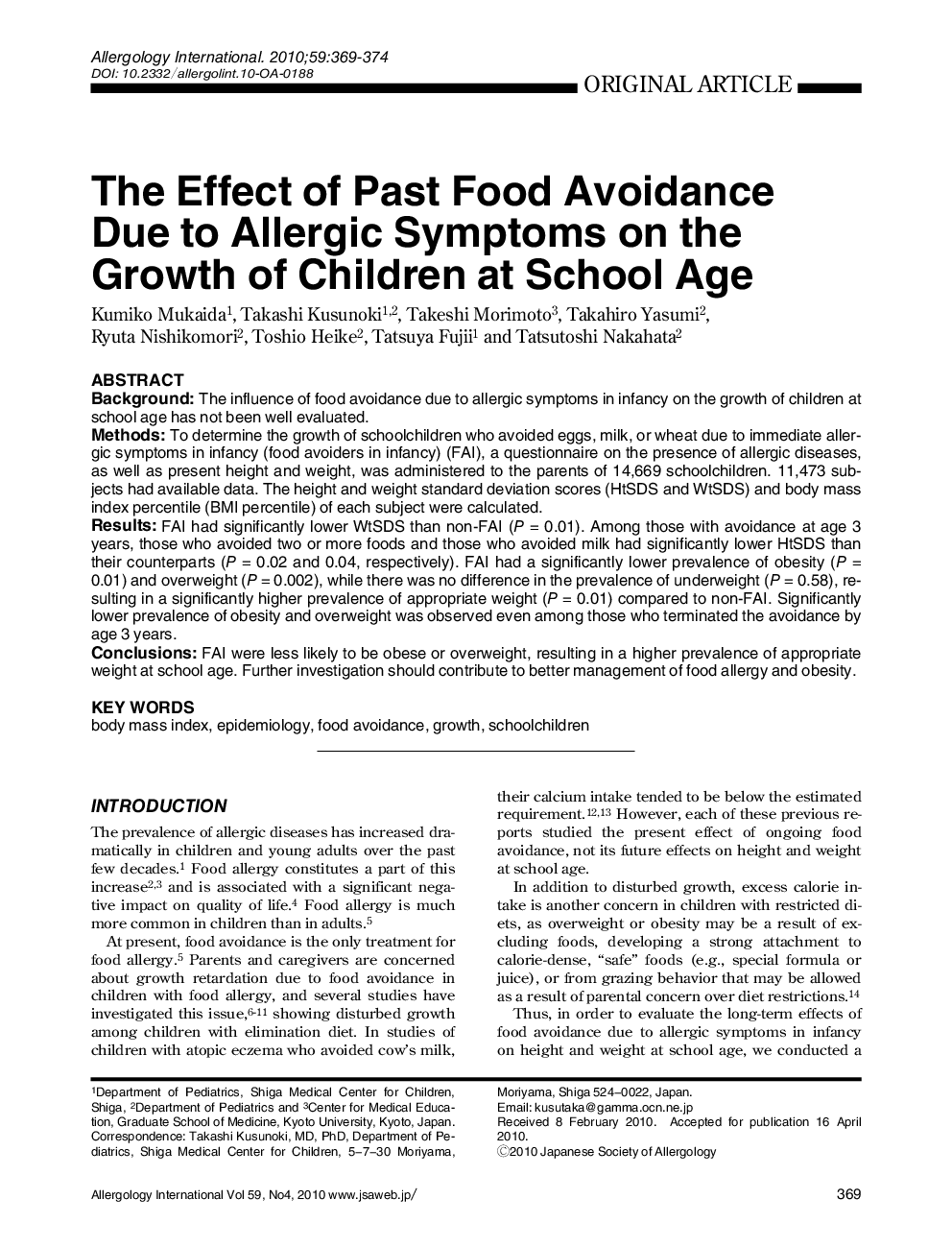| کد مقاله | کد نشریه | سال انتشار | مقاله انگلیسی | نسخه تمام متن |
|---|---|---|---|---|
| 3340933 | 1214080 | 2010 | 6 صفحه PDF | دانلود رایگان |

ABSTRACTBackgroundThe influence of food avoidance due to allergic symptoms in infancy on the growth of children at school age has not been well evaluated.MethodsTo determine the growth of schoolchildren who avoided eggs, milk, or wheat due to immediate allergic symptoms in infancy (food avoiders in infancy) (FAI), a questionnaire on the presence of allergic diseases, as well as present height and weight, was administered to the parents of 14,669 schoolchildren. 11,473 subjects had available data. The height and weight standard deviation scores (HtSDS and WtSDS) and body mass index percentile (BMI percentile) of each subject were calculated.ResultsFAI had significantly lower WtSDS than non-FAI (P = 0.01). Among those with avoidance at age 3 years, those who avoided two or more foods and those who avoided milk had significantly lower HtSDS than their counterparts (P = 0.02 and 0.04, respectively). FAI had a significantly lower prevalence of obesity (P = 0.01) and overweight (P = 0.002), while there was no difference in the prevalence of underweight (P = 0.58), resulting in a significantly higher prevalence of appropriate weight (P = 0.01) compared to non-FAI. Significantly lower prevalence of obesity and overweight was observed even among those who terminated the avoidance by age 3 years.ConclusionsFAI were less likely to be obese or overweight, resulting in a higher prevalence of appropriate weight at school age. Further investigation should contribute to better management of food allergy and obesity.
Journal: Allergology International - Volume 59, Issue 4, 2010, Pages 369-374